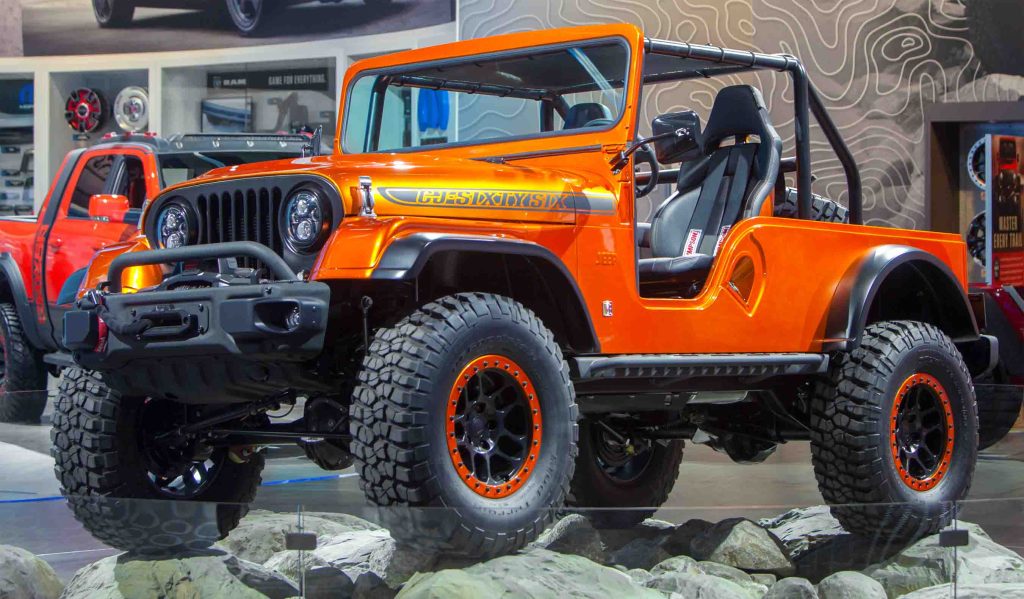Vintage Jeeps and modern models represent two distinct eras of automotive engineering, each with its unique characteristics and appeal. For enthusiasts and potential buyers alike, understanding the differences between these classic off-road vehicles and their contemporary counterparts is essential. In this blog, we’ll explore what sets vintage Jeeps apart from modern models, highlighting their unique features, advantages, and limitations.
The Charm of Vintage Jeeps: A Look Back in Time
What Makes Vintage Jeeps Unique?
Vintage Jeeps, with their roots stretching back to the 1940s, have a distinctive charm that modern models can’t quite replicate. Their historical significance, classic design, and the sense of adventure they evoke make them stand out.
• Historical Value: Vintage Jeeps like the Willys MB and CJ-5 are more than just vehicles; they are icons of their time. Their design reflects the needs and technology of their eras, making them valuable artifacts of automotive history.
• Classic Aesthetics: The rugged, boxy design of vintage Jeeps exudes a timeless appeal. Features like the iconic seven-slot grille, round headlights, and utilitarian interiors are cherished by collectors and enthusiasts.
Driving Experience and Performance
Driving a vintage Jeep offers a unique experience compared to modern models. The driving dynamics of these classic vehicles are influenced by their engineering and design principles.
• Off-Road Capability: Vintage Jeeps were built with off-road performance in mind. Their simple, sturdy construction and high ground clearance make them well-suited for rugged terrain.
• Handling and Ride: The driving experience in a vintage Jeep can be less refined compared to modern vehicles. Features such as manual steering and older suspension systems offer a more direct, but less cushioned ride.
Modern Jeeps: Innovation Meets Tradition
How Modern Jeeps Stand Out
Modern Jeeps, while paying homage to their vintage predecessors, incorporate advanced technology and design innovations that cater to today’s drivers.
• Advanced Technology: Contemporary models come equipped with state-of-the-art features such as GPS navigation, touchscreen infotainment systems, and advanced driver-assistance systems (ADAS). These enhancements offer improved convenience, safety, and connectivity.
• Enhanced Comfort: Modern Jeeps provide a higher level of comfort and luxury. Features like heated seats, climate control, and refined interiors make for a more enjoyable driving experience.
Performance and Capabilities
Modern Jeeps are designed to offer exceptional performance both on and off the road, with advancements in engineering and technology.
• Engine Options: Today’s Jeeps offer a range of powerful engines, including turbocharged and hybrid options, providing better performance and fuel efficiency compared to their vintage counterparts.
• Ride Quality: Modern suspension systems, advanced shock absorbers, and improved steering contribute to a smoother and more controlled ride, enhancing overall driving comfort.
Comparing Vintage Jeeps and Modern Models: Key Differences
Design and Aesthetics
• Vintage Jeeps: Known for their classic, rugged look, vintage Jeeps feature simple lines and functional design elements that reflect their era. Their minimalist approach is often favored by purists and collectors.
• Modern Jeeps: Today’s models blend traditional Jeep aesthetics with contemporary styling. Sleeker lines, updated grilles, and more aerodynamic shapes offer a blend of old and new.
Technology and Features
• Vintage Jeeps: Limited by the technology of their time, vintage Jeeps lack the advanced features found in modern vehicles. Their appeal lies in their mechanical simplicity and historical significance.
• Modern Jeeps: Equipped with the latest technology, modern Jeeps offer features like adaptive cruise control, lane-keeping assist, and smartphone integration, catering to today’s tech-savvy drivers.
Driving Experience
• Vintage Jeeps: Driving a vintage Jeep provides a raw and authentic experience, characterized by its manual controls and direct feedback from the road. It’s ideal for those who appreciate a hands-on approach.
• Modern Jeeps: Modern Jeeps offer a more refined driving experience with smoother handling, quieter cabins, and enhanced comfort features. They are designed for daily driving as well as off-road adventures.
Choosing Between Vintage and Modern Jeeps: What’s Right for You?
Considerations for Vintage Jeep Enthusiasts
• Restoration and Maintenance: Owning a vintage Jeep often involves restoration and ongoing maintenance. Enthusiasts should be prepared for potential repairs and the need for specialized parts.
• Historical Appreciation: If you value historical significance and enjoy classic automotive design, a vintage Jeep may be the right choice for you.
Considerations for Modern Jeep Buyers
• Convenience and Technology: If you prioritize modern amenities, safety features, and a smoother driving experience, a modern Jeep is likely a better fit.
• Daily Use and Versatility: Modern Jeeps are designed to handle daily driving tasks and off-road adventures with ease, making them suitable for a wide range of activities.
Conclusion
Vintage Jeeps and modern models each offer unique benefits, appealing to different types of drivers and enthusiasts. Vintage Jeeps captivate with their historical charm and classic design, while modern Jeeps impress with their advanced technology and refined performance. Whether you’re drawn to the nostalgia of a vintage Jeep or the convenience of a modern model, both types of Jeeps represent the enduring legacy of a brand that has consistently delivered rugged, reliable vehicles for over seven decades. By understanding what sets them apart, you can make an informed choice and embrace the Jeep that best suits your needs and preferences.



